Temperature gradients and boost clock in detail
The cooler is acceptable, so that the temperatures of 72 to 73 °C can be left in an open structure and 74 to 75 °C in the closed housing. However, you can already see the limitations of the dual slot design here. The clock is still in the closed housing and after the final warm-up at 1845 to 1860 MHz, which is good, but not the maximum possible. But you can still overclock and adjust the fan curve, then you can also with this card up to just over 2 GHz.
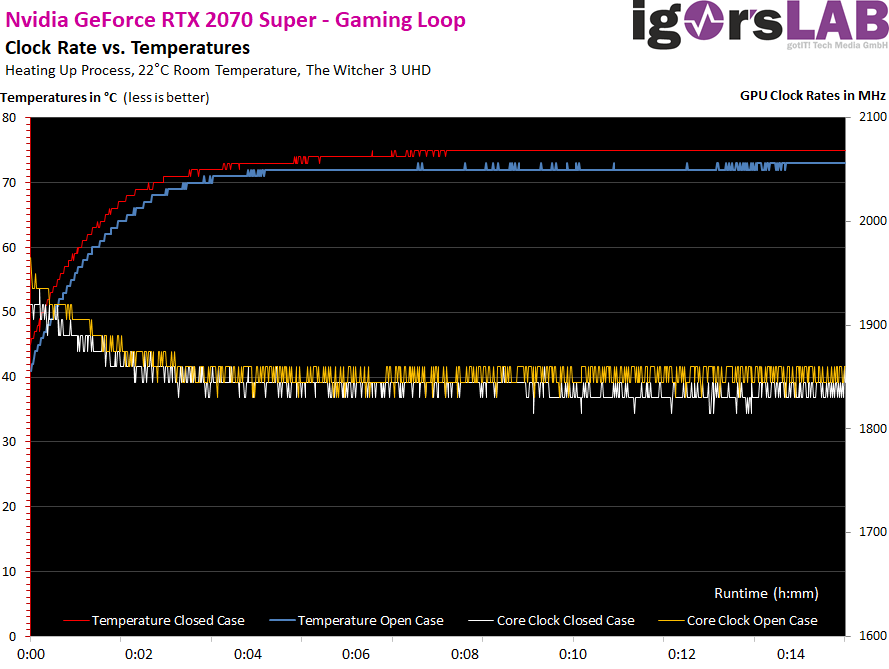
This is no different with the stress test, because the waste heat is largely the same as the power consumption.
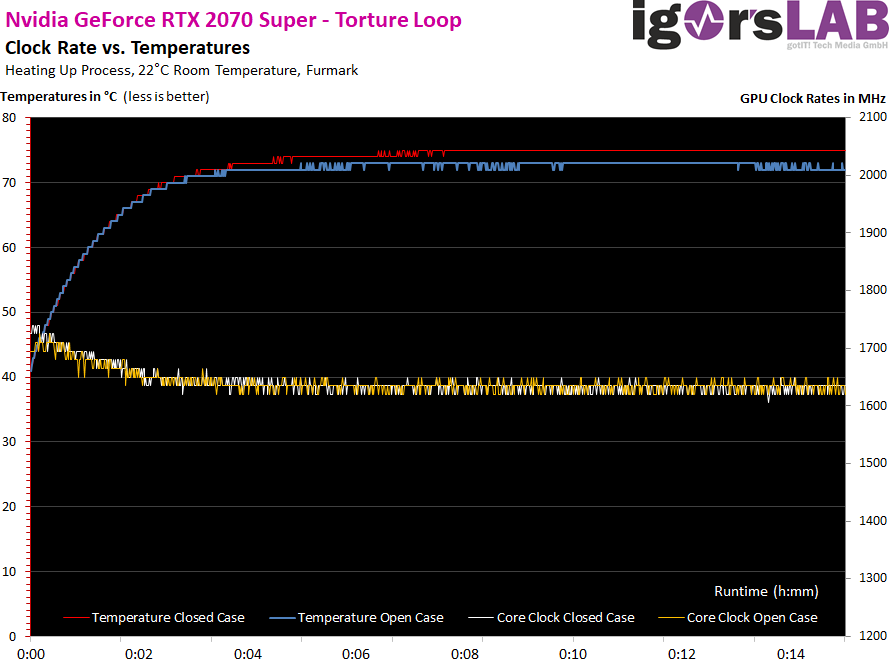
And now the whole thing again in sober numbers in table form, and I compare the map to the larger GeForce RTX 2080 FE in fairness:
| Initial RTX 2070 Super |
Final value RTX 2070 Super |
Final value RTX 2080 FE |
|
|---|---|---|---|
| Open Benchtable | |||
| GPU Temperatures |
34 °C | 72 to 73 °C |
75 °C |
| GPU clock | 1965 MHz | 1860 MHz |
1815 MHz |
| Ambient temperature | 22 °C | 22 °C | 22 °C |
| Closed Case | |||
| GPU Temperatures |
33 °C | 71-72 °C |
75 °C |
| GPU clock | 1965 MHz | 1845 MHz |
1800 MHz |
| Air temperature in the housing | 25 °C | 41 °C | 42 °C |
Board Analysis: Infrared Images
The following image gallery shows all infrared images for the gaming and the torture loop in the open structure and in the closed case. The differences are visible, but the cooler does not act badly, because it is not so much hotter in the end. What is really striking, however, is that there are no real hotspots, but the area is quite uniformly heated. This testifies to the already mentioned pavement with thermal pads and the connection of large areas to the radiator.
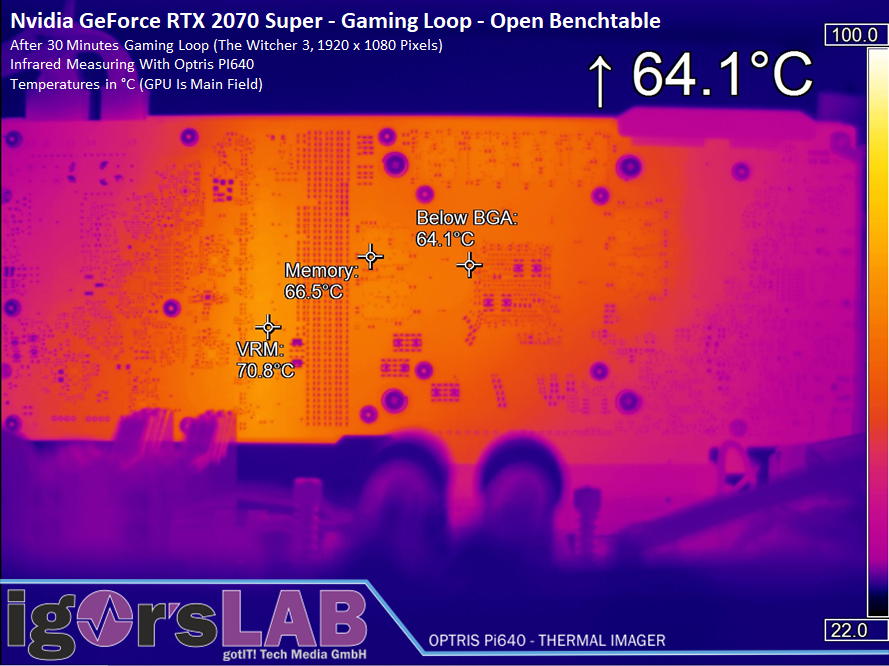
Temperatures rise by two to 3 degrees, but the fan also rotates a tick faster.
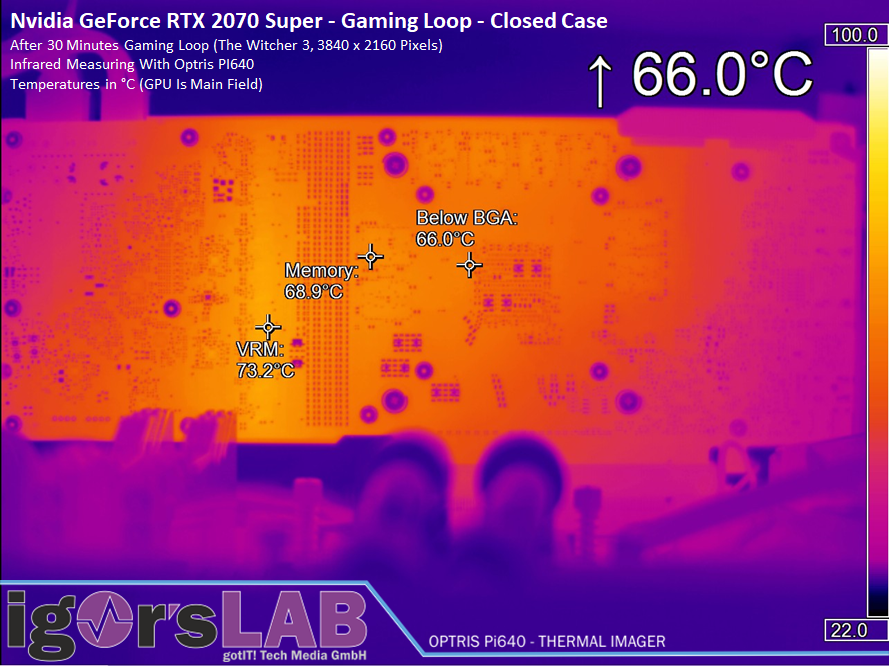
The stress test shows the same picture, especially since the increase with not yet one degree is rather negligible compared to the scenarios of open construction,
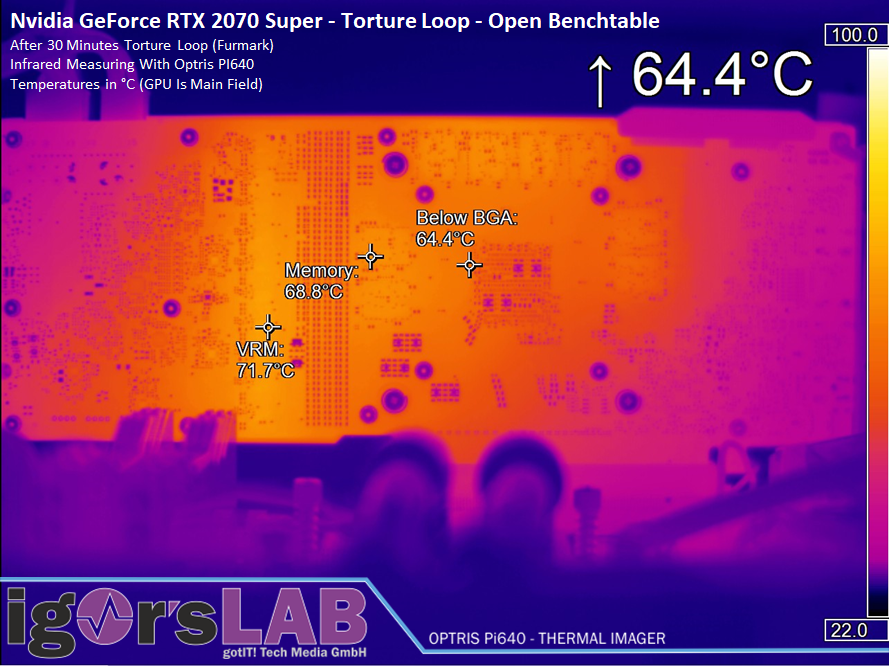
Here, in the closed structure, another 2 to 3 degrees are added. Nothing to really think about.
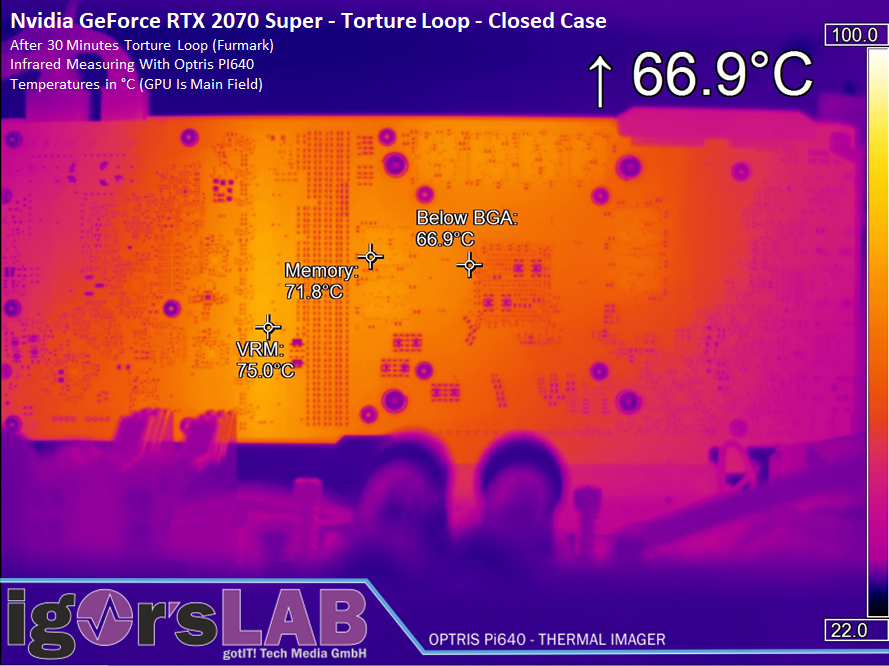
- 1 - Einführung und Übersicht
- 2 - Tear Down: Platine und Kühler
- 3 - The Division 2
- 4 - F1 2019
- 5 - Far Cry 5
- 6 - GTA V
- 7 - Metro Exodus
- 8 - Shadow of the Tomb Raider
- 9 - Total War: Three Kingdoms
- 10 - World War Z
- 11 - Leistungsaufnahme im Detail
- 12 - Temperatur, Takt, Infrarot
- 13 - Lüfter und Lautstärke
- 14 - Zusammenfassung

































Kommentieren